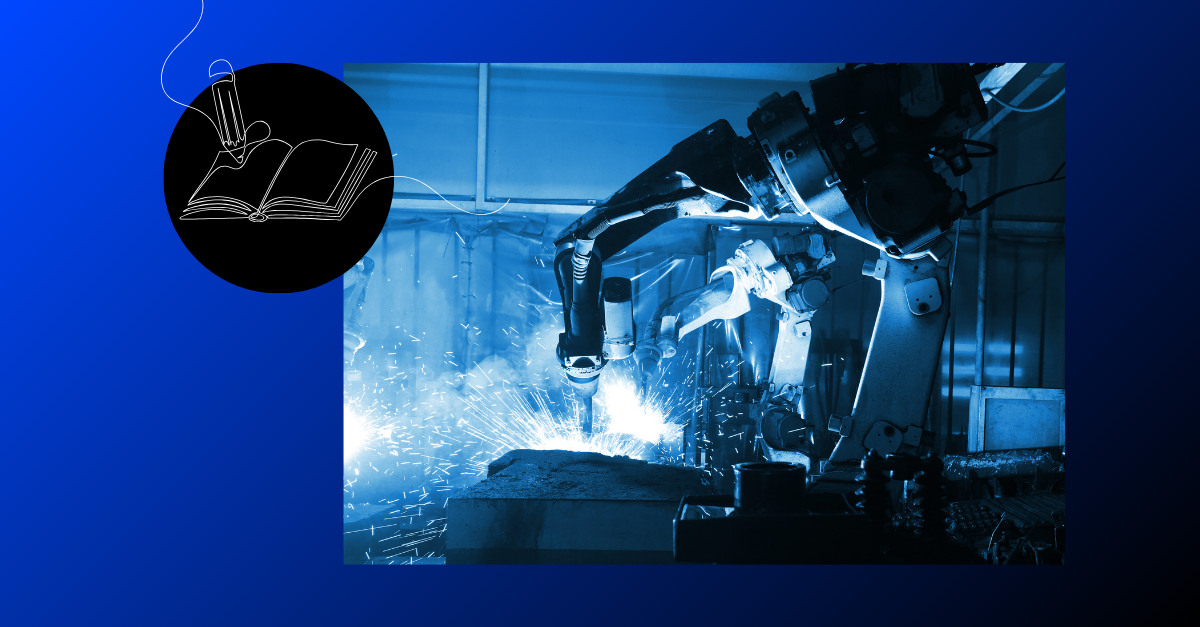I believe AI Overviews are doing the wrong job.
We don’t need a large language model to tell us how to mitigate diabetes or bake the perfect pizza in three bullet points.
Instead, we need AI to help us decide which articles best answer our questions. Imagine, for example, getting a Sameness Score that tells you the next post in line is 96% similar to the one you just read. You could skip that click and move on to something more novel.
I recently published a LinkedIn post with this thesis, and it touched a collective nerve. I got dozens of replies, reposts, direct messages, and in-person conversations, expanding on the idea and suggesting alternative search engines that do some of the things proposed in the post. The feedback provided plenty of good ideas that deserve more space.
So, where did AI Overviews go wrong? And how should they be used to improve the search experience for both users and marketers?
Contents
- What’s wrong with AI Overviews?
- How should AI Overviews make search better?
- Some search engine features are on the right track
What’s wrong with AI Overviews?
When Google first announced the broader rollout of its AI Overviews, it invited users to “let Google do the Googleing for you.” The idea was to give searchers a brief, AI-generated answer to queries right on the search engine results page (SERP).

AI Overviews attempt to answer a user’s question on the SERP.
Feedback for AI Overviews was fast and furious. Users quickly shared examples of odd responses they saw in their searches (no, you shouldn’t eat rocks every day, put glue on pizza, or change your car’s blinker fluid).
Erroneous answers are challenging. However, the responses from my LinkedIn post pointed to more foundational problems of AI overviews–issues that put Google at odds with users, content creators, and the environment.
💡 Download the 2024 Google Ads Industry Benchmarks Report to see how your Google ads perform against others in your industry.
“They make my research harder”
Search engines are librarians of sorts, leading users past endless stacks of articles, videos, and websites to find content that answers their questions.
Imagine, though, if you asked for books on puppy training. Instead of pointing to the proper shelf, your librarian spent five minutes encapsulating the basics of teaching dogs to sit and stay based on a few possibly unvetted sources.
That’s the challenge Krista Ruane, a content creator and Emmy-nominated producer/director, highlighted in a LinkedIn reply. “I’ve been so annoyed by those summaries,” Krista wrote. “They’re not useful and are sometimes even inaccurate. They make my research harder because I need real sources.”
Google makes a big deal out of its guidelines for quality content, collectively known as E-E-A-T. AI Overviews ignore the tenets of E-E-A-T, producing untrustworthy content instead of making it easy to find the best possible option from existing assets online.
“Google is eating its own tail”
AI Overviews negate the need to click on some links and push the rest further down the results page. That could significantly reduce the amount of traffic websites get from search engines (Gartner predicted organic traffic will fall by 25% due to the activities of AI chatbots like AI Overviews by 2026).

AI Overviews take up prime space on results pages.
Traffic is the incentive for most creators to produce new content. AI Overviews will slash the incentive for people to create the very thing that trains Google’s AI and makes its business model viable.
Dorothy Bayern, a senior writer and editor in science and tech, pointed this out. “Google is eating its own tail by bypassing website clicks,” she wrote. “No clicks [leads to] no new web content [leads to] no new data to pre-chew for users.”
Google recently announced AI Overview ads, so marketers can at least get some exposure in the robo-responses. But non-paid traffic will become much harder to harvest.
“Generative AI requires much more energy than traditional keyword searches”
This point came from a discussion about the broader effects of AI Overviews. A recent Scientific American article shared that it can take up to 30 times the energy to produce new text for an AI response compared to a traditional search result.
Google processes about 85 billion searches every day. Even though Google only rolled out AI Overviews broadly in the US, and they only show up in a portion of results, a huge amount of additional energy is still needed. And that power draw will grow when Google pushes the program worldwide.
“Embedding generative AI in such a widely used application [online search] is likely to deepen the tech sector’s hunger for fossil fuels and water,” the Scientific American piece concluded.
There’s no stopping AI now, and in many cases, that’s a net positive. However, there is an opportunity to use the technology more intentionally, only consuming extra resources when there’s a significant benefit in exchange.
👋 Learn how (and how not) to use AI in The Emergency Guide to AI in Marketing.
How should AI make search better?
If AI isn’t tasked with answering our questions, what can we ask it to do? Ideally, Google could train its large language models to show us what’s on the other side of each link. Properly educated, we’ll be more prudent with our clicks, saving us from skimming unhelpful content and speeding up our research.
Tell us what’s inside an article
AI is excellent at surfacing the most valuable bits from a text. That’s one application that would speed up research, wrote Alexander Perekalin, Marketing Content Manager at Mouseflow.

Search engine users want to know more about content before they click on it.
I could see this as a hover-over summary for the top search results if not all.
I’d also love to see the summary include points unique to the content. Say you’re searching for the best brownie recipe; you might get an overview that says, “This recipe goes in-depth on the best flours for brownies” or “This post includes a shopping list the others don’t.”
Confirm credibility
In theory, Google should prioritize the highest-quality, most trustworthy content. In reality, some SERPs have several unverified articles that may include incorrect information. Sometimes that’s an inconvenience. For health or financial queries, those that Google calls “Your Money or Your Life” (YMYL), errors are dangerous.
There are a few ways AI could help us know which of these posts to trust. First, AI could tag content with a credibility score based on the website’s history (like if the website has published a lot of content for a long time about similar topics).
In her LinkedIn reply, Krista suggested a second option: Google could label critical content by whether or not it’s been fact-checked by a trusted or known expert.
In a third verification step, Google’s AI could tell you if the article contains original data. That way you’re not running down the all-to-common statistics rabbit hole looking for original sources and unique data.
Guide us to the next click
You often need to scan multiple pieces of content to find the complete answer to your question. How exhausting is it to skim a half dozen articles only to find they’re nearly identical? And then none of them give any unique information that expands your understanding.
That’s where the Sameness Score comes in. AI could tell us that the next post in line is nearly identical to the one we’ve just read. Combined with the unique attributes it shows for each result, you’d know which content to skip, which to review, and what to look for when you click.
After you’ve reviewed the first page, AI could show you what post to read next based on where others went before you. A statement like, “85% of people who read this post opened this one next,” would be really helpful.
Some search engine features are on the right track
Several people responded to the LinkedIn post with ways alternative search engines use AI to address one or more of the ideas above. Here are the highlights.
Arc’s article summaries
Tamilore Oladipo, a content writer at Buffer, introduced me to the Arc Browser and its Arc Search feature. Arc gives you an AI-generated page overview when you hover over a link on a desktop or pinch a page on a smartphone.
Arc also has a feature called Browse for Me which creates a custom tab with multiple webpages organized from a single query. It seems to be pretty popular with Arc users.

Arc’s Browse for Me feature is a hit with its users.
I couldn’t test Arc for myself. The Arc Browser works with Windows 11, Mac, and iOS (I’m on Windows 10 and Android). It looks interesting, though.
Brave’s Goggles
Pedrag Pesic, a multidisciplinary designer, suggested checking out Brave Search and its Goggles option. Goggles lets you create customized ranking signals to tailor your results feed to your needs. You can also use a Goggle created by someone else in the community.

Brave’s Goggle feature lets you customize your search results.
Brave states that its results are based on its own index (rather than relying on algorithms from the likes of Google) and that it automatically blocks ads.
You don’t need an app or specific operating system to use Brave Search. I played around with it a few times. It produces an AI summary similar to Google’s AI Overviews. And I liked how it grouped Reddit discussions in a separate box instead of mixing them with other links.
Google’s Web filter
You may have noticed the new Web filter option on your Google results pages. It showed up with relatively little fanfare since Google announced it on the same day as the AI Overview expansion. But I’d argue it’s one of the most useful options added to Google Search in a long time.
Basically, Web turns Google Search back into a simple web search without the knowledge graphs, snippets, or AI Overviews.

Un-filtered Google search result

Google search result with the new Web filter
Some searches benefit greatly from People Also Ask and Featured Image snippets. But if you just want to find links, Web is the way to go.
Better AI Overviews could solve search’s biggest problems
Shifting AI Overviews from providing answers to exposing content details would be a boon for Google users. Research would speed up, and content would be easier to find—the hallmarks of a great search experience.
But I believe there could be an even more profound effect when AI is tasked with telling us about the content on SERPs. It’ll push creators to produce better, more differentiated posts and videos.
Clicks are currency in search engine marketing. You don’t get paid if Google users don’t click your link. A Sameness Score, credibility rating, and uniqueness review would tell users which content is different and trustworthy.
Better content would then collect more clicks, and creators would be motivated to produce pieces that stand out with novel perspectives, original data, and verified information. You know, what Google says it’s wanted all along.









Comments
Please read our Comment Policy before commenting.